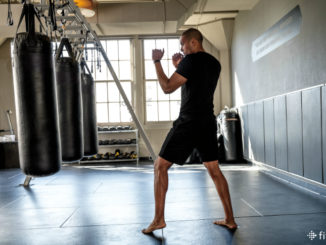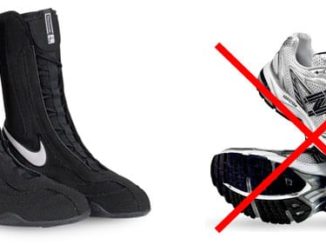
Despite boxing being about 70% anaerobic, your body’s ability to process oxygen is essential to good boxing. Being 70% anaerobic means that boxing simulates short sprints, explosive movements, and dextrous agility that requires big energy on demand and needs less oxygen than a more aerobic activity.
The optimal training formula for boxing is not locked in however, old school long distance roadwork is still a staple of many coaches’ and boxer’s regimens. Most good boxers and coaches have figured however, that training has to simulate the intensity of the actual event. Anything less than training for what a fight feels like will leave you performing sub optimally. There is a slight distinction between breathing, oxygen usage, and boxing efficiency, yet they are all related. Below, one of my YouTube subscribers brings this issue to my attention, and I’ll attempt to answer it based on a holistic view of performance training for boxing.
“I really enjoy your vids! It’s helping me a lot in every aspect. I was wondering about breathing in sparring. The funny thing is when I hit the bags, heavy bag, double end bag, body snatcher bag. I don’t have a problem. But when I spar I have a problem. I guess I’m holding my breath. Can you please give me some pointers? Any help would be greatly appreciated.”
First off, the proper breathing technique for boxing allows you to expel air almost completely when you throw your punches so the body’s natural instinct to take air back in goes into effect. This way you have a steady supply of new oxygen coming in. To do this you have to exert your exhalation from the lowest part of your abdomen. If you exhale and only exert pressure from your upper diaphragm or chest then you are going to get tense and tired real quick.
The best way I’ve found to do this is to make a loud “hmph” or “huh” sound on each punch while keeping your mouth closed and breathing out through your nose. When the air goes out strong your body will call it back. It’s ideal to breath back in through your nose, I’ve had a deviated septum for years so breathing back in through my nose has always been tough, but it’s ideal. The specific noise you make when you exhale doesn’t matter, a lot of top boxers make a “SSS” sound when they punch, some like Ricky Hatton, make a loud “Hagh”. The key is that the air has to come from the lowest part of your abdomen, this also makes your body a bit tougher and more durable against counters to the body.
One way to test this and get a feel is to put your fingertips right below your navel and let out a forceful “Hmph”, do three or four fast ones in a row just like when you throw a combo, you should feel the exertive outward pressure of your abdomen. Now try this, put your fingertips on your upper abdomen and exhale forcefully without letting your lower abdomen exert pressure, you’ll notice that you feel tight and still have a lot of air left in your lungs to expel. In the heat of real boxing, this is how a lot of people tend to breath, it takes training, experience and conditioning to get this properly calibrated.
There is a bigger problem for my prospective boxer above though, and poor breathing may be the symptom, but it’s not the cause. One thing I stress in training is to simulate the fight feel and conditions as much as possible. A lot of fighters either forget, are unaware, or lack drive to get in the proper shape for a fight. Hitting the bag is the equivalent of a jog, and fighting is the equivalent of a sprint. Sparring and fighting is high intensity for the simple reason that the opponent moves, and applies pressure through offense and his ability to dodge your attacks. It takes a lot of steam to launch an attack and to retreat to safety, with a bag it only takes about half the effort. Let me put it to you in measurable terms: if you are going to have a 100 punch output during a round of sparring, you need to be ready for a 300 punch round on the bag. This is about the equivalent I have found, it may be a little less depending on your footwork and head movement, but you get the idea.
One thing I stress to fighters is to hit the bag at fight pace. Fight pace is rapid, it’s dynamic, it incorporates head movement, in and outs, lateral motion, in fighting, and fast fast fast combos! My recommendation is to have at least 2 workouts a week where you go 4 rounds at fight pace. This means you warm up for 3 rounds. And then when round 4 hits, it’s a mad fury and all out tactical brawl with the bag.
How will you know if you are doing it right? By the end of the third round at fight pace you will be begging for the bell to ring. Another way you’ll know is when everyone in the gym is staring at you wondering if they need to exorcise the demon within.
You need to simulate the feel of a real fight in training. Another trick I used to do is when the bell would go for the round, I would bust out 20 straight burpees before stepping to the bag. I would do this for each round. Under these conditions you will learn to fight tired and under fatigue. You don’t want to train this way all the time, I recommend twice a week. Remember in training to simulate the feel of your toughest rounds in the ring!
Proudly WWW.PONIREVO.COM
by JT Van V



